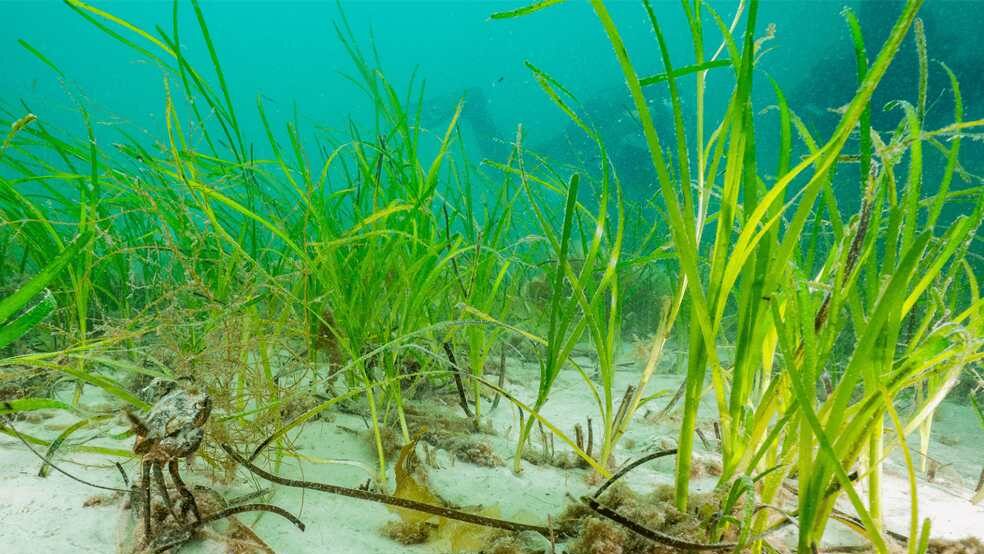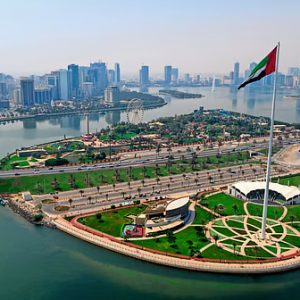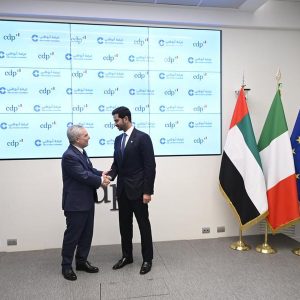Abu Dhabi seagrass restoration program is a landmark initiative aimed at revitalizing the emirate’s critical marine ecosystems. Launched by the Environment Agency Abu Dhabi (EAD), this program seeks to restore seagrass meadows that are vital for marine biodiversity, coastal protection, and climate change mitigation. The project reflects Abu Dhabi’s long-term commitment to environmental conservation and its strategy to protect marine life while supporting sustainable development along the coast.
Seagrass meadows are underwater flowering plants found in shallow coastal waters, forming dense underwater carpets that provide essential habitat and food for marine species. These meadows play a critical role in supporting marine biodiversity, stabilizing coastlines, improving water quality, and capturing carbon dioxide. For Abu Dhabi, restoring seagrass is particularly significant because it helps protect one of the largest populations of dugongs in the world, along with other marine life such as fish, crabs, and sea turtles.
The Importance of Seagrass
Seagrass is often underestimated despite its immense ecological value. These underwater meadows provide shelter and breeding grounds for a variety of marine animals. Dugongs, which are herbivorous marine mammals similar to manatees, feed almost exclusively on seagrass. The survival of these species is therefore directly linked to the health of seagrass meadows.

Beyond providing habitat and food, seagrass meadows serve as carbon sinks. They store carbon in their roots and surrounding sediment, helping to mitigate climate change by absorbing and storing greenhouse gases from the atmosphere. Seagrass also acts as a natural water filter, improving water clarity by trapping sediments and pollutants. This helps maintain the overall health of the marine environment and ensures sustainable fishing activities, which are vital for local communities.
Abu Dhabi’s Marine Ecosystem and Seagrass
The coastal waters of Abu Dhabi are home to three main species of seagrass: Halodule uninervis, Halophila ovalis, and Halophila stipulacea. Together, these species cover thousands of square kilometers of Abu Dhabi’s shallow coastal areas. These seagrass beds support a wide variety of marine organisms, from small invertebrates to large marine mammals.

Dugongs are one of the most iconic species associated with these meadows. Abu Dhabi hosts the second-largest dugong population globally, making seagrass restoration crucial for their continued survival. Healthy seagrass ecosystems also support sea turtles, fish, and other marine animals, contributing to biodiversity and ecological balance.
Objectives of the Seagrass Restoration Program
The Abu Dhabi seagrass restoration program has several key objectives:
Enhancing Blue Carbon Storage
One of the primary goals is to enhance the storage of “blue carbon” which is the carbon captured by ocean ecosystems such as seagrass, mangroves, and salt marshes. By restoring seagrass meadows, Abu Dhabi aims to increase the amount of carbon sequestered in coastal sediments, contributing to the fight against climate change. This makes seagrass not only an ecological asset but also an essential tool in global climate mitigation efforts.
Supporting Marine Biodiversity
The program focuses on creating healthy habitats for marine species. By planting and nurturing seagrass meadows, EAD ensures that dugongs, fish, and other species have a safe environment for feeding, breeding, and growing. This is critical for preserving the unique marine ecosystem of Abu Dhabi and maintaining ecological balance.
Improving Water Quality
Seagrass meadows act as natural filters, absorbing nutrients and sediments that enter the sea from rivers, urban runoff, or coastal activities. By restoring these underwater habitats, Abu Dhabi can maintain clearer waters, reduce pollution impacts, and protect marine life.
Supporting Sustainable Fisheries
Fisheries depend on healthy marine ecosystems for productivity. Seagrass meadows provide nursery grounds for juvenile fish, ensuring the replenishment of fish populations. By restoring these habitats, the program contributes to the sustainability of local fisheries, benefiting both the environment and the community.
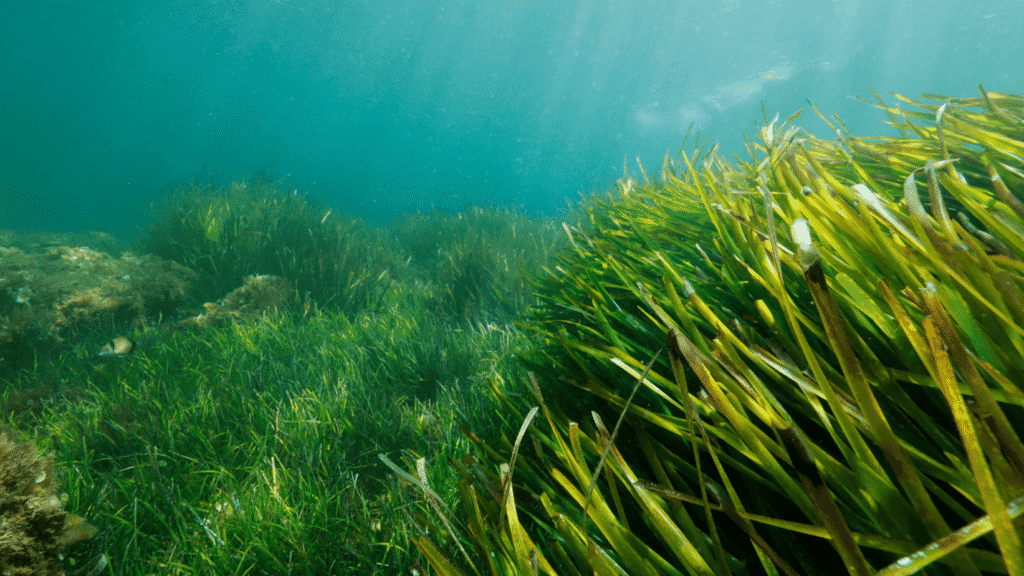
Boosting Eco-Tourism
Healthy seagrass meadows attract marine wildlife, including dugongs and turtles, which are of great interest to eco-tourists. Restoration efforts therefore support eco-tourism, offering opportunities for responsible nature-based tourism and raising awareness about marine conservation.
Techniques Used in Seagrass Restoration
The restoration program employs a variety of scientific techniques to ensure the successful recovery of seagrass meadows. These include:
Transplanting Seagrass: Young seagrass shoots are carefully transplanted into degraded areas, allowing them to establish and grow naturally.
Monitoring and Mapping: Advanced satellite and drone technology is used to monitor seagrass health and track growth over time.
Sediment Management: The program ensures that seagrass is planted in areas with stable sediment to prevent uprooting or erosion.
Community Involvement: Volunteers and local stakeholders participate in planting events, raising awareness and supporting restoration efforts.
These techniques combine traditional conservation practices with modern technology to maximize the success of restoration.
Partnerships and Collaboration
The Abu Dhabi seagrass restoration program is a result of collaboration between government agencies, environmental organizations, and private sector partners. Such partnerships are essential because large-scale restoration requires resources, expertise, and long-term commitment.
Working together, these groups ensure that the project is scientifically sound, financially sustainable, and aligned with Abu Dhabi’s environmental goals. Collaboration also promotes knowledge sharing, helping Abu Dhabi become a global example in marine ecosystem restoration.
Broader Impacts on the Environment
Restoring seagrass meadows has far-reaching benefits beyond just marine life. These ecosystems help protect coastlines by reducing wave energy, preventing erosion, and stabilizing sediment. Healthy seagrass beds also enhance nutrient cycling, supporting the productivity of surrounding waters and maintaining overall ecological balance.
By restoring seagrass, Abu Dhabi contributes to global climate solutions through carbon storage. These meadows act as natural carbon sinks, capturing and storing significant amounts of carbon dioxide. In addition, restoration promotes biodiversity, ensures sustainable fisheries, and creates economic benefits through eco-tourism.
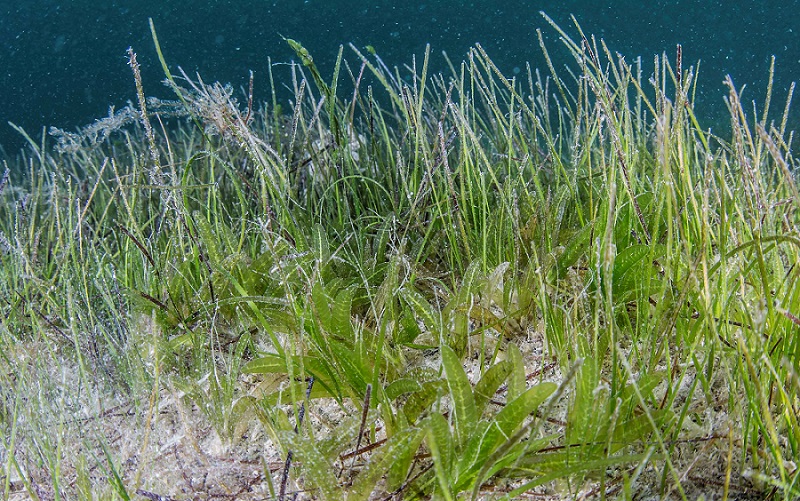
Community Engagement and Education
EAD emphasizes public participation in marine conservation. Community engagement programs educate residents about the importance of seagrass and marine ecosystems. Volunteers often assist in planting and monitoring activities, fostering a sense of stewardship and connection to the environment.
Educational initiatives target schools, universities, and local communities, highlighting how everyday actions impact marine ecosystems. Public awareness campaigns encourage sustainable practices such as reducing pollution, responsible boating, and avoiding damage to sensitive habitats.
Challenges and Future Directions
Despite its success, the program faces challenges that require careful planning and management:
Climate Change: Rising sea temperatures, increased salinity, and ocean acidification can threaten seagrass growth. Adaptive strategies are essential to ensure the resilience of restored meadows.
Pollution: Coastal runoff, including chemicals and plastics, can harm seagrass health. Reducing pollution sources is crucial for long-term restoration success.
Coastal Development: Urban expansion and infrastructure development can lead to habitat loss or fragmentation. Conservation policies and environmental regulations are necessary to balance development with ecosystem protection.
Looking ahead, EAD plans to expand restoration efforts to cover more areas, integrate research on seagrass ecology, and involve additional stakeholders in long-term conservation. By addressing these challenges, Abu Dhabi aims to ensure the sustainability and growth of its marine ecosystems for future generations.
Conclusion
The Abu Dhabi seagrass restoration program represents a visionary effort to protect marine biodiversity, combat climate change, and support sustainable livelihoods. By restoring vital underwater meadows, Abu Dhabi is safeguarding its dugong population, enhancing fish stocks, improving water quality, and capturing carbon.
This initiative is more than an environmental project; it is a statement of commitment to ecological stewardship and sustainable development. Through collaboration, scientific innovation, and community involvement, the program sets a benchmark for marine restoration not only in the UAE but globally.
With continued dedication, the restored seagrass meadows will thrive, providing benefits to marine life, local communities, and the planet for years to come. Abu Dhabi’s efforts remind us that protecting nature is a shared responsibility, and every restoration effort counts in building a more sustainable future.
Do follow UAE Stories on Instagram
Read Next – Discover How Zayed National Museum Revolutionizes Multisensory Experiences in UAE

